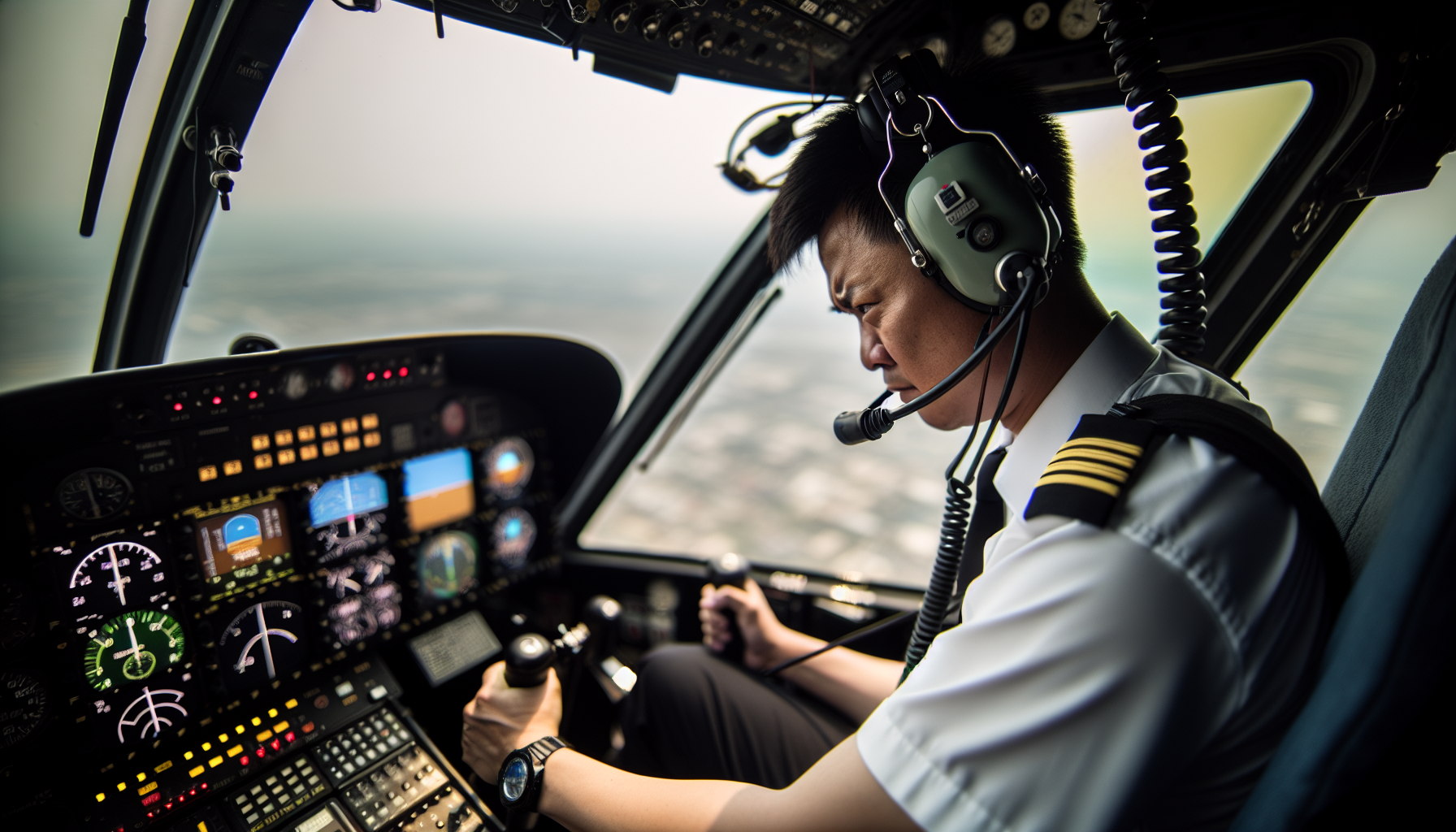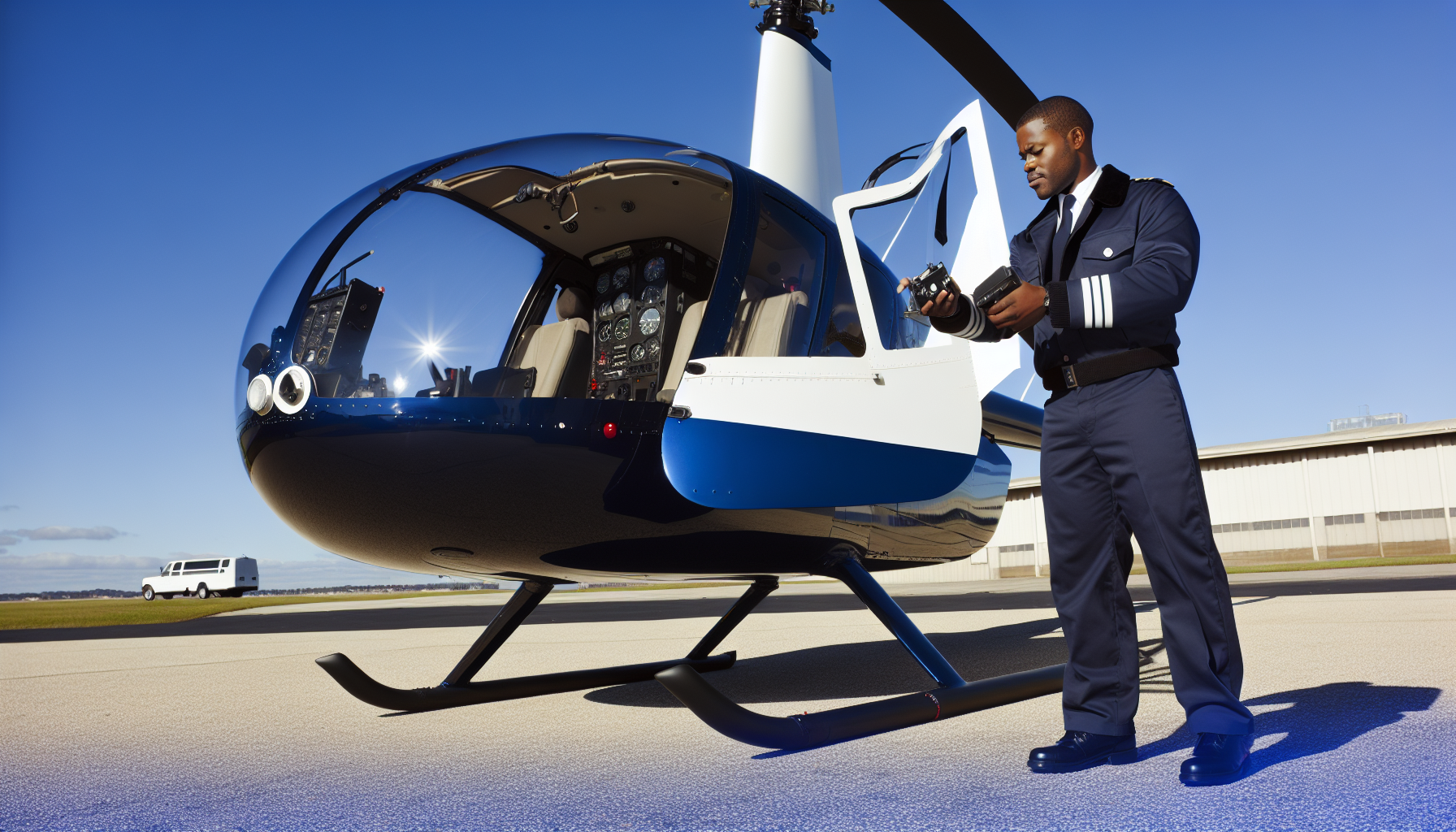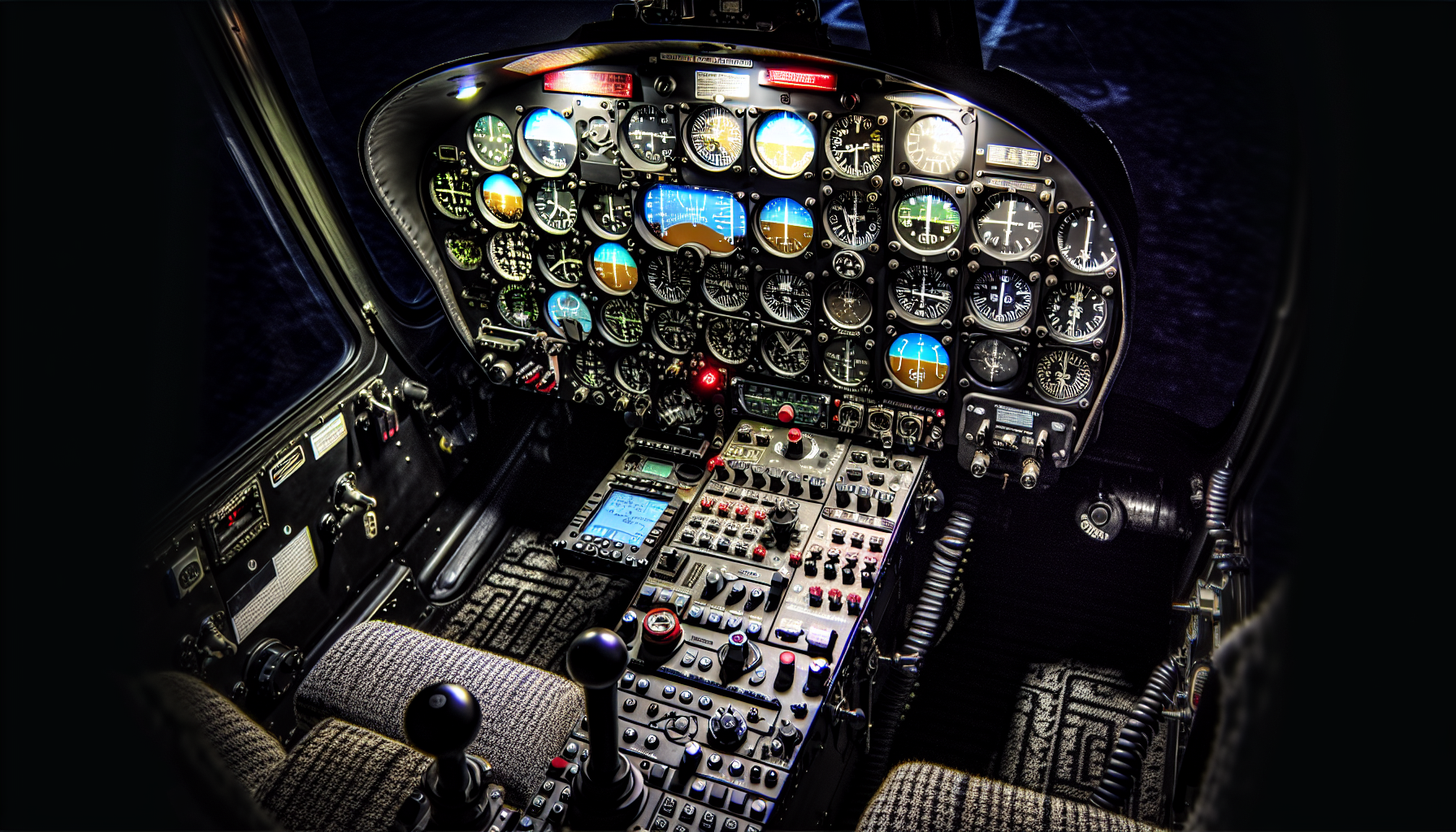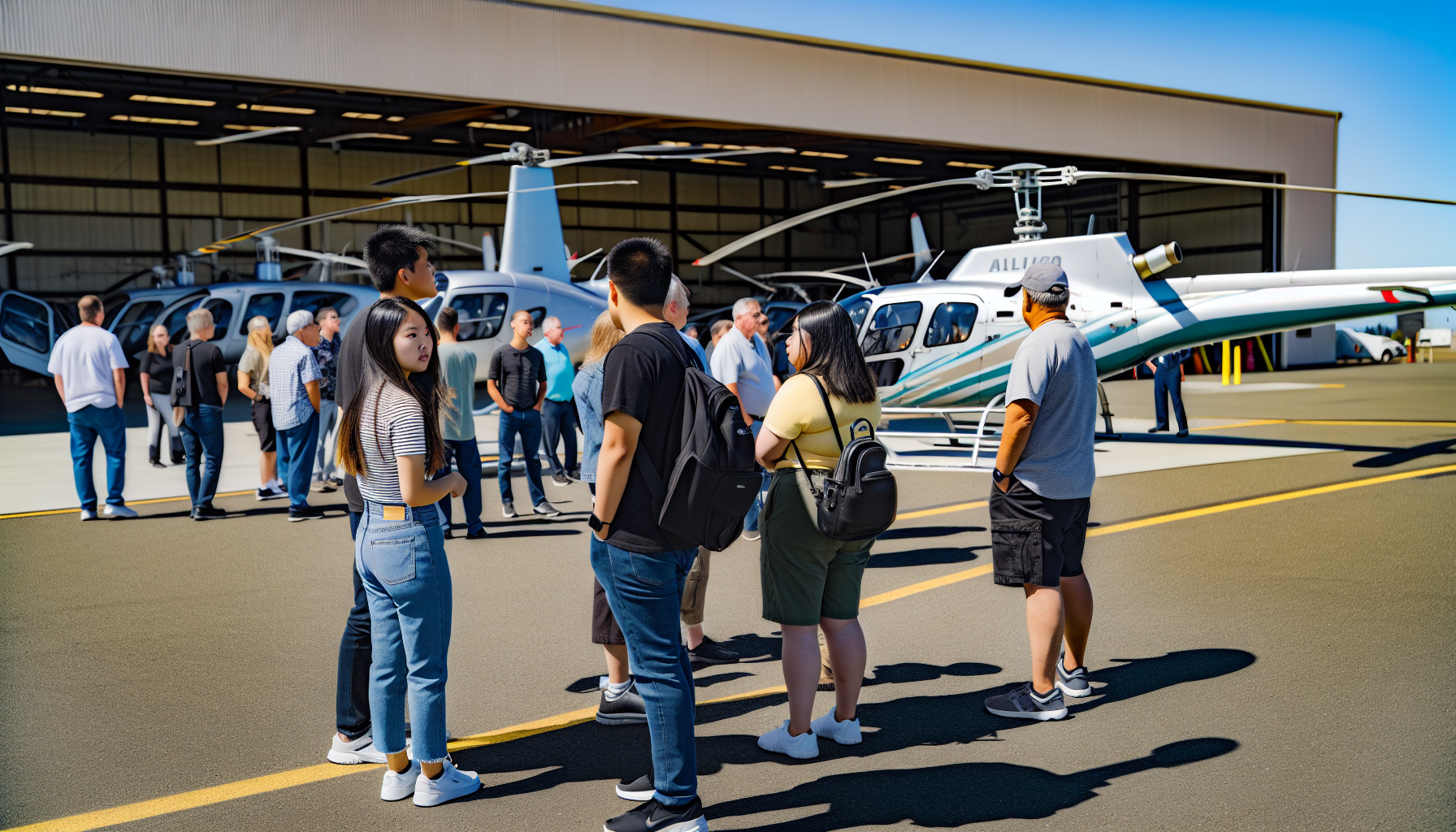How to Get Helicopter Pilot License: Ultimate Guide
Feb 16, 2024
The sky is no longer the limit, it’s the goal. As an aspiring helicopter pilot, your journey starts from the ground up. From understanding eligibility criteria to mastering complex flight maneuvers, becoming a helicopter pilot is an adventure filled with challenges and triumphs.
Ready to embark on this thrilling journey and learn how to get helicopter pilot license? Buckle up and let’s take off!
Key Takeaways
-
Navigate the journey to obtaining a helicopter pilot license by understanding eligibility criteria, completing ground school and reaching flight milestones.
-
Master advanced skills such as night flying and emergency procedures through specialized ratings and workshops.
-
Financing options, including average costs across the nation, financial aid opportunities & factors to consider when selecting a flight school can help you make an informed decision on your path towards becoming a licensed helicopter pilot.
Navigating the Path to Your Helicopter Pilot License

Imagine soaring through the sky, with the world beneath you and endless possibilities ahead. That’s the life of a helicopter pilot. But this life doesn’t come without hard work and dedication. To earn your wings, you’ll need to navigate a route filled with intriguing stops like understanding eligibility criteria, ground school essentials, and flight training milestones.
Are you ready to plot the course to your dreams?
Understanding Eligibility Criteria
Aspiring helicopter pilots need certain qualifications to take to the sky, similar to how a bird needs feathers to fly. The eligibility criteria for acquiring a helicopter pilot’s license, also known as a helicopter pilot certificate, typically include:
-
Age requirements: You must be at least 17 years old to apply for a helicopter private pilot license.
-
Medical requirements: A medical certificate is required to confirm your physical capability to operate an aircraft.
-
Experience requirements: Depending on the type of license you are seeking, you may need a certain number of flight hours or specific training.
Remember, the sky’s the limit only if you are fit and ready to fly.
Ground School Essentials

Before you can take off to the skies, ground school serves as the academic cornerstone of flight training, providing a necessary launchpad. It is here that you acquire the essential theoretical knowledge required for obtaining a helicopter pilot’s license. From learning about aerodynamics to understanding flight maneuvers and emergency procedures, ground school lays the foundation for becoming a knowledgeable and safe pilot.
After all, the journey of a thousand miles (or in this case, flight hours) begins with a single step, or in your case, a ground school lesson.
Flight Training Milestones
Your flight training journey, much like a bird first fluttering its wings before it can fly, is marked by significant milestones. These milestones include completion of dual instruction, solo flight time, and fulfillment of cross-country requirements. These experiences are not just about accumulating flight hours; they are about developing the skills, confidence, and knowledge to safely and proficiently operate a helicopter.
So, buckle up, spread your wings, and prepare for a journey that promises to be as exciting as the destination itself.
The Private Pilot Helicopter License Journey

The beginning of an exhilarating journey is marked by the milestone of stepping into the cockpit for the first time as a private pilot. It’s like taking the driver’s seat for the first time, only this time, the roads are replaced by open skies and the vehicle is a state-of-the-art flying machine.
As a private pilot, you will need to clock in a total of 40 hours of flight time, including solo flights. Think of it as a rite of passage on your way to obtaining a private helicopter pilot license.
Solo Flight Time and Restrictions
Your transition from a student to a pilot is marked by the momentous occasion of your first solo flight, which is akin to a bird leaving the nest for the first time. However, this thrilling milestone comes with a set of rules and obtaining your student pilot certificate is an essential step in the process.
The minimum solo flight time required for obtaining a private helicopter pilot’s license is 10 hours. These hours are not just about logging flight time but are an opportunity to apply the skills acquired from dual instruction and to demonstrate proficiency in operating a helicopter independently.
Preparing for the Private Pilot Check Ride
A private pilot candidate must prepare for the check ride, similar to how a student prepares for an important exam. The check ride is a two-part exam – an oral and a practical test – that marks the final hurdle before you can earn your private pilot certificate, also known as a private helicopter pilot license. It’s like your final performance after weeks of rehearsal.
To ace your performance, you need to review the Practical Test Standards established by the FAA and ensure a thorough understanding of the maneuvers that will be assessed.
From Private to Commercial Helicopter Pilot
You may wish to spread your wings further and soar into the world of commercial aviation after earning your private pilot license. Transitioning from a private to a commercial helicopter pilot involves advanced training and additional experience requirements. Like upgrading from a car to a truck, you’ll need to learn new skills and meet higher standards.
But with dedication and hard work, you can achieve your dream of becoming a commercial helicopter pilot.
Commercial License Advancement
It requires a higher level of knowledge and skill to advance to a commercial helicopter license, similar to the transition from high school to college. To transition from a private to a commercial helicopter pilot license, you will need additional training and flight time. It’s a big step, but one that opens up new possibilities, like flying for a living or taking on more challenging assignments.
Night Flight Training and Cross Country Requirements
A commercial helicopter pilot must be proficient in night flight and cross-country flying, just like a driver learning to navigate in the dark. The ability to fly at night and in different weather conditions is an essential skill for a commercial pilot.
It’s like learning to drive in different weather conditions – it requires extra training and a higher level of skill, but it significantly enhances your versatility and employability.
Specialized Ratings and Advanced Certifications
You may want to specialize in certain areas or earn advanced certifications as you progress in your flying career. It’s like choosing a major in college or earning a master’s degree – it requires additional study and practice, but it can open up new opportunities and increase your marketability. Some areas of specialization in the aviation industry include:
-
Airline transport pilot
-
Flight instructor
-
Off shore flying
-
Mountain operations
-
Sling load operations
Consider your interests and career goals when deciding which areas to specialize in.
Instrument Rating: Flying in Diverse Conditions

An instrument rating is similar to a driver who learns to navigate using GPS. It enables you to fly in diverse weather conditions and navigate using instruments. To earn this rating, you’ll need to meet certain requirements and pass a written exam. It’s a challenging process, but it’s a valuable skill that can make you a safer and more versatile pilot.
Becoming a Helicopter CFI
Becoming a Certified Flight Instructor (CFI) can be likened to a graduate becoming a teacher. It allows you to share your knowledge and passion with others and play a crucial role in shaping the next generation of helicopter pilots. To become a CFI, you must meet certain requirements, pass a written exam, and demonstrate your teaching skills in a practical test.
It’s a challenging and rewarding path that can open up new career opportunities and take your love of flying to new heights.
Maintaining Proficiency and License Renewal
Maintaining your proficiency is crucial once you’ve earned your wings. Maintaining proficiency and renewing your pilot license are crucial aspects of being a helicopter pilot. It’s like a professional athlete staying in shape in the off-season – you need to keep your skills sharp and stay up to date with the latest regulations and safety procedures.
Flight Review and Recency of Experience
Staying current as a pilot can be likened to a doctor keeping up with the latest medical research. Pilots are required to pass a flight review every 24 calendar months to maintain their certification. In addition to this, they must meet certain recency of experience requirements.
It’s a part of the journey that ensures you continue to fly safely and confidently.
Advanced Workshops and Emergency Procedures
Similar to continuing education in other fields, advanced workshops and emergency procedure training are crucial for pilots. These workshops can help you enhance your skills, stay current in the industry, and ensure your safety and the safety of your passengers. Some key benefits of attending these workshops include:
-
Mastering advanced flight maneuvers
-
Learning how to handle emergencies
-
Enhancing your decision-making skills
-
Improving your communication and teamwork abilities
It’s a commitment to lifelong learning that sets the best pilots apart.
Financing Your Flight Training
You may need financial assistance to fund your helicopter flight training, much like a student may need a scholarship or loan to pay for college. From understanding the costs involved to exploring financial aid options, this section will guide you through the financial aspects of becoming a helicopter pilot.
Estimating the National Average Costs
Preparing a budget for a major purchase is similar to understanding the costs of helicopter flight training. It requires you to consider various factors, from tuition fees to equipment costs.
In this subsection, we’ll delve into the financial investment required to take to the skies professionally. The national average cost for obtaining a helicopter pilot license can range significantly depending on various factors such as location, flight school, and the number of flight hours required to meet the FAA’s minimums. Generally, you can expect to invest between $24,000 and $95,000 for a private pilot license. However, for those aiming to acquire a commercial pilot license, the costs can escalate to between $54,000 and $125,000 due to the higher number of flight hours and advanced training required.
Financial Aid and Scholarship Opportunities
Aspiring helicopter pilots can explore financial aid and scholarship opportunities to help fund their flight training, just as students can apply for scholarships or financial aid to help pay for college. From scholarships to loans, there are various options available that can help you achieve your dream of becoming a helicopter pilot.
Choosing the Right Flight School for You

Choosing the right flight school can be compared to selecting the right college. It’s a big decision that can significantly impact your journey to becoming a helicopter pilot. From considering the location and cost to evaluating the quality of instruction, this section will guide you in making an informed decision.
Factors to Consider When Selecting a Flight School
More than just picking the closest or cheapest option, choosing the right flight school involves several considerations. It’s like a homebuyer considering the location, price, and condition of a house. You’ll need to consider several factors, including:
-
The location of the flight school
-
The cost of the training program
-
The experience and qualifications of the instructors
-
The available resources and facilities at the school
Taking these factors into account will help you make an informed decision and choose the flight school that is best suited to your needs and goals.
Accelerated Programs vs. Traditional Training
In addition to the school itself, the type of training program that best fits your needs is another crucial factor when selecting a flight school. From accelerated programs to traditional training methods, each has its own advantages and challenges. It’s like choosing between a fast-paced boot camp or a more leisurely paced traditional course – the best choice depends on your learning style, availability, and career goals.
Summary
As we taxi back to the hanger, it’s time to reflect on our journey. We’ve soared through the skies of knowledge, navigated the landscape of training, and landed safely with a wealth of information. As with any journey, the path to becoming a helicopter pilot is filled with challenges and triumphs. But with determination, commitment, and the right guidance, you can earn your wings and reach for the sky.
Frequently Asked Questions
How long does it take to become helicopter pilot?
Becoming a helicopter pilot typically takes two years if you attend university flight school, or a few months with non-university flight school and long hours.
Is it harder to get a helicopter or plane license?
Getting a helicopter license can be challenging due to its cost and training requirements, but neither a plane or helicopter license is definitively harder than the other; it ultimately depends on one's personal preference, career goals, and financial considerations.
Do helicopter pilots make good money?
Helicopter pilots in the US make an average salary of $99,716 and can earn up to $128,000 per year, with hourly rates typically ranging between $29 and $61. The highest salaries are found in California, New York, and New Jersey.
What are the eligibility criteria for becoming a helicopter pilot?
In order to become a helicopter pilot, you must meet the age, medical and experience requirements set forth by your training institution. A valid medical certificate is also required to prove your physical capability to operate an aircraft.
What is the difference between a private and a commercial helicopter pilot license?
A private pilot license allows an individual to fly for pleasure or personal transportation, while a commercial pilot license permits flying for hire and carrying of passengers and cargo.
